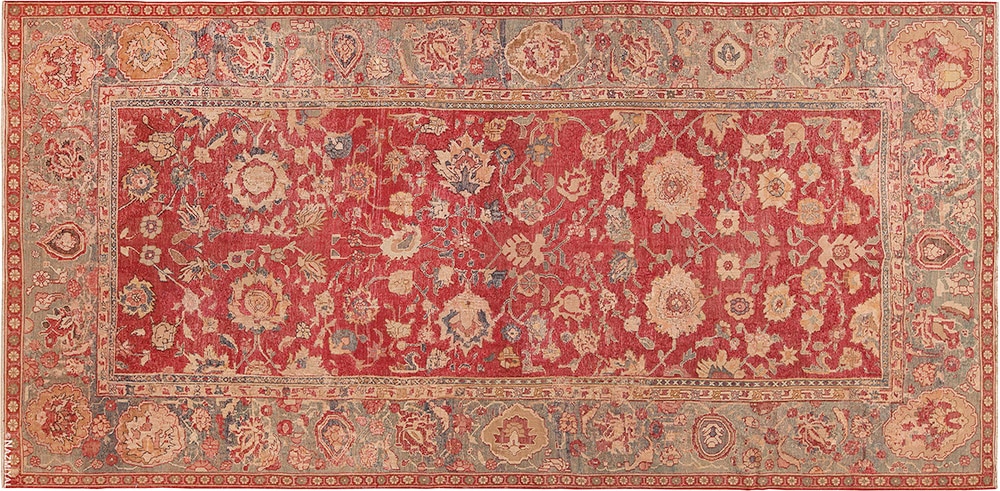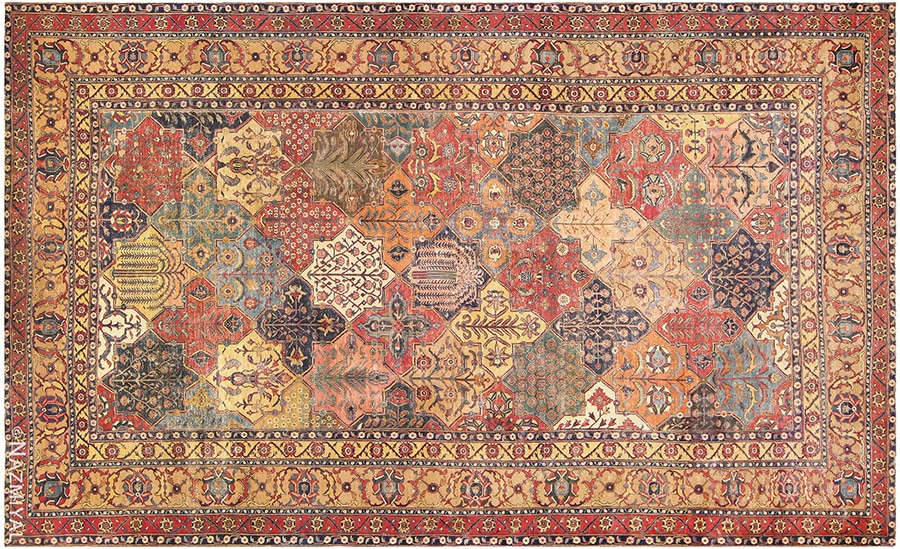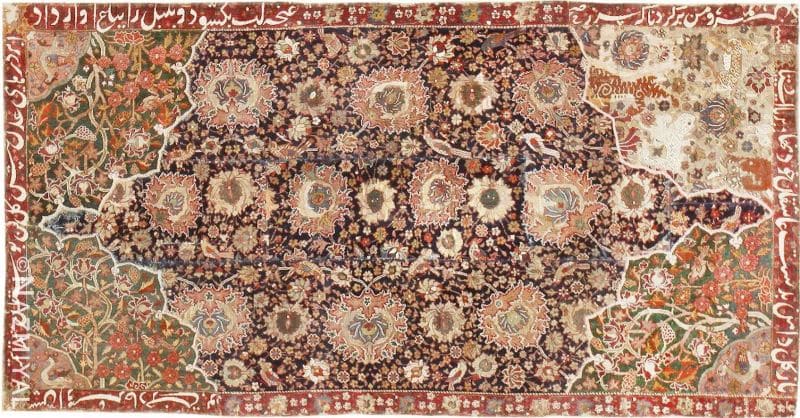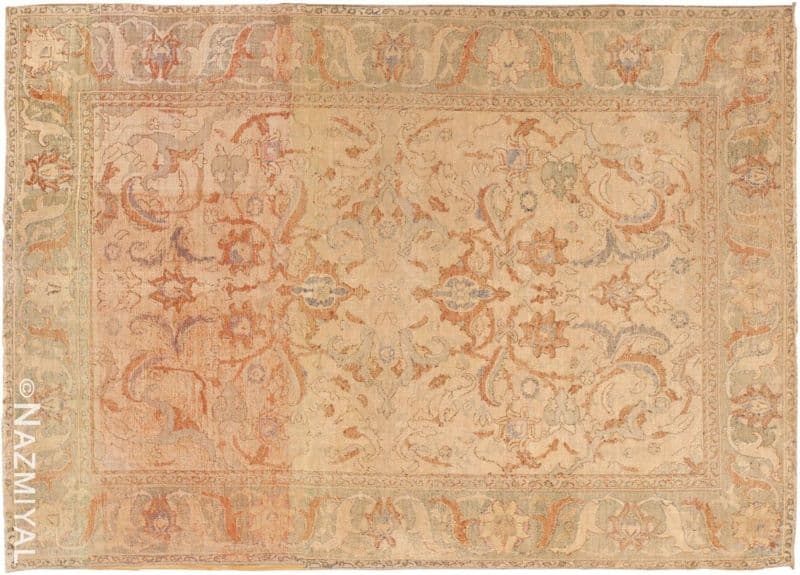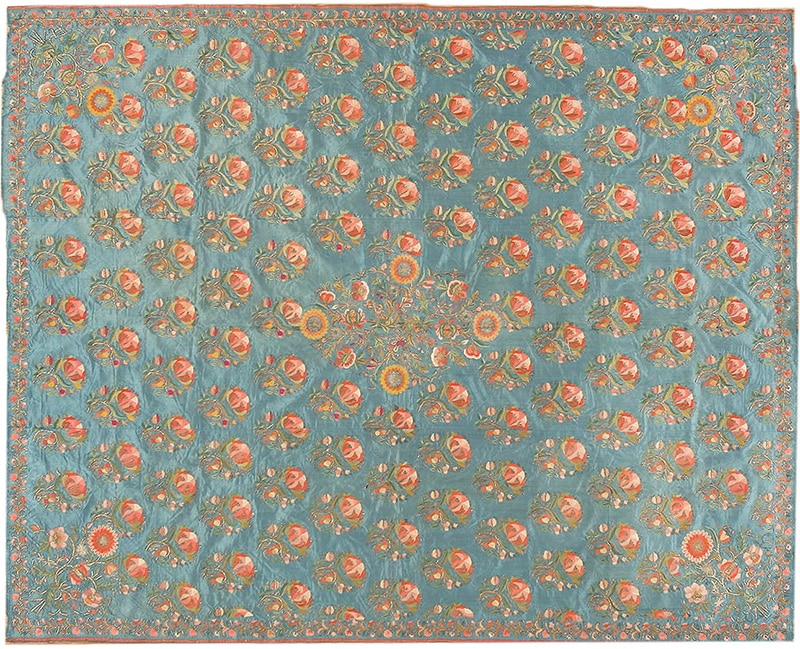History Of Court Carpets
What are court carpets?
Court carpets, by definition, are floor coverings that were handwoven under the watchful eyes, direction and at times subsidized by the ruling “court”. So, for example, The Ottoman court carpets are those area rugs that were woven by the earlier Ottoman ruling sultans in what is modern day Turkey.
Artistic Weaving of Islamic Carpets
Woven pieces of textile art, tapestries and carpets were created by people of all economic statuses throughout the Islamic world. Predominantly women weavers in Central Asia, Anatolia and the Middle East have been making rugs for generations. In doing so, they have been passing down their skills and designs from generation to generation in communities and nomadic encampments. These ladies continued the practice of making carpets for both commercial and domestic usage.
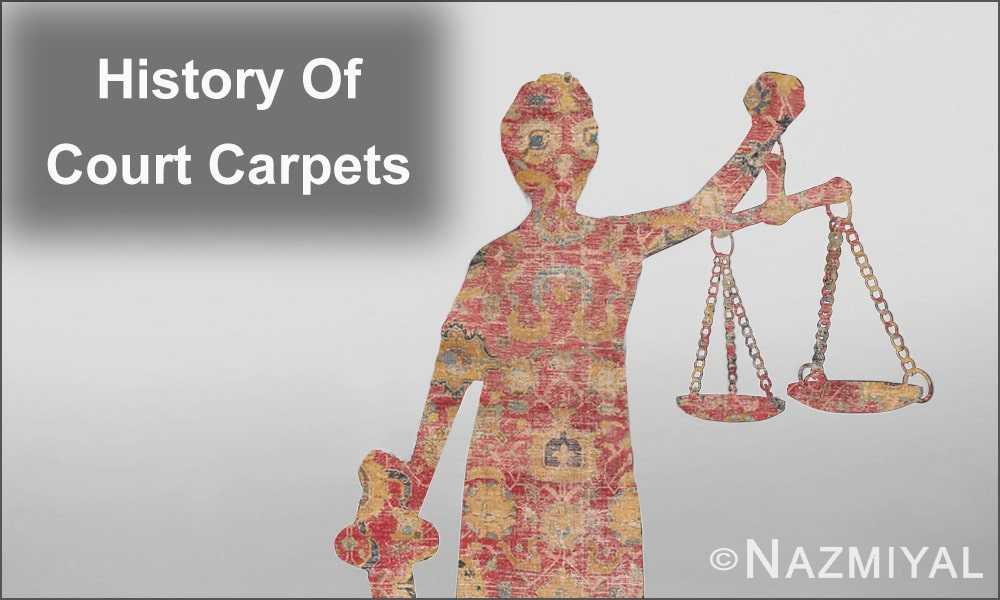
History Of Court Carpets
The imperial court system of the Islamic world also produced mats. These mats were more than simply a practical necessity; they were also exquisite works of art that reflected the owners’ social and financial standing. The floors of receiving rooms, hearing chambers, and jury religious organizations were covered with carpets. They were also given as imposing presents to various kings and queens. Paintings from 16th and 17th-century manuscripts reveal that several carpets were utilized in outdoor buildings and palace grounds and that tiny rugs were typically stacked on top of bigger ones.
Using the finest architects and artisans, their empires could muster lavish materials like silk and steel threads and rulers could construct massively gigantic, opulent carpets. Court carpets are some of the best works of Islamic art due to their high quality, intricate designs, and expert craftsmanship. Carpets commissioned by the court tend to look extremely different from those woven in commercial factories or rural homes. Designs on court carpets aren’t limited to those used in centuries-old conventional motifs; they’re also frequently found in bookbinding and manuscript art.
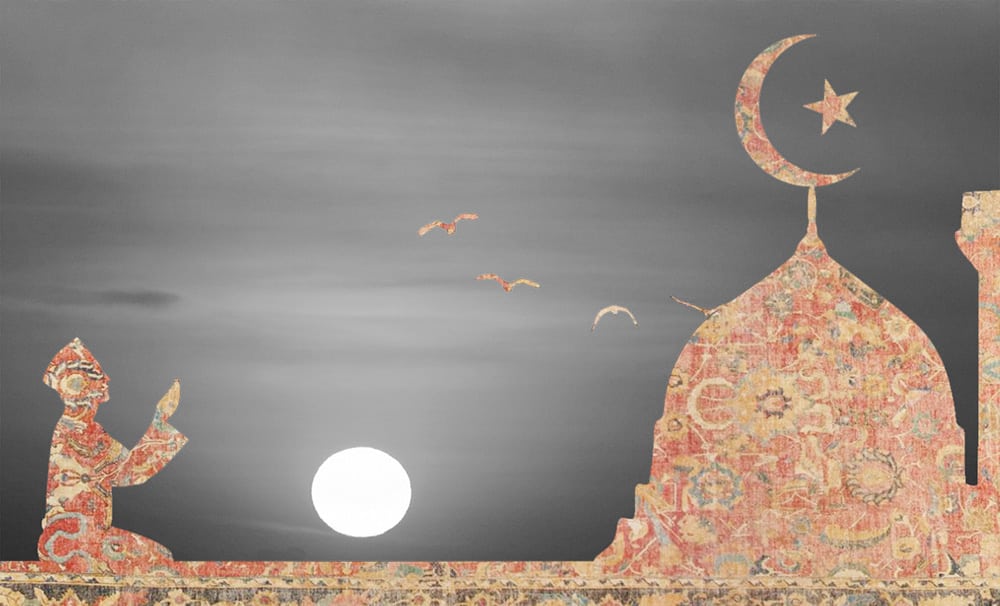
Antique Islamic Carpets
Some of the most exquisite examples of royal court carpets may be found in collections featuring some of the best rugs of the of Mughal (1526–1858), Safavid (1501–1732) and Ottoman (1299–1923) empires.
The Ottoman court carpets
The Ottoman Empire, one of Islam’s most powerful and enduring dynasties, was founded in Anatolia (modern-day Turkey). The Ottoman empire ruled from 1299 until 1923 and held sway over a vast swath of land from North Africa to Eastern Europe. Carpet weaving has a long history in Anatolia. Still, beginning in the 16th century, the carpets commissioned by the Ottoman court featured a distinct set of designs developed by artisans in the palace workshops and replicated in pottery, paintings, bookbinding and fabrics.

The location of Anatolia.
For example, the “saz style”— characterized by long, curving leaves and stylized flowers—was quite fashionable. The “floral style” was established by court painters to depict flowers like tulips, roses, carnations, and hyacinths more realistically. Numerous silks, carpets, ceramics and manuscripts commissioned by the court had either a floral or saz theme or both, along with additional motifs such as the Chintamani pattern (often a mix of pearl-like circles by wavy lines also termed “tiger stripes”).
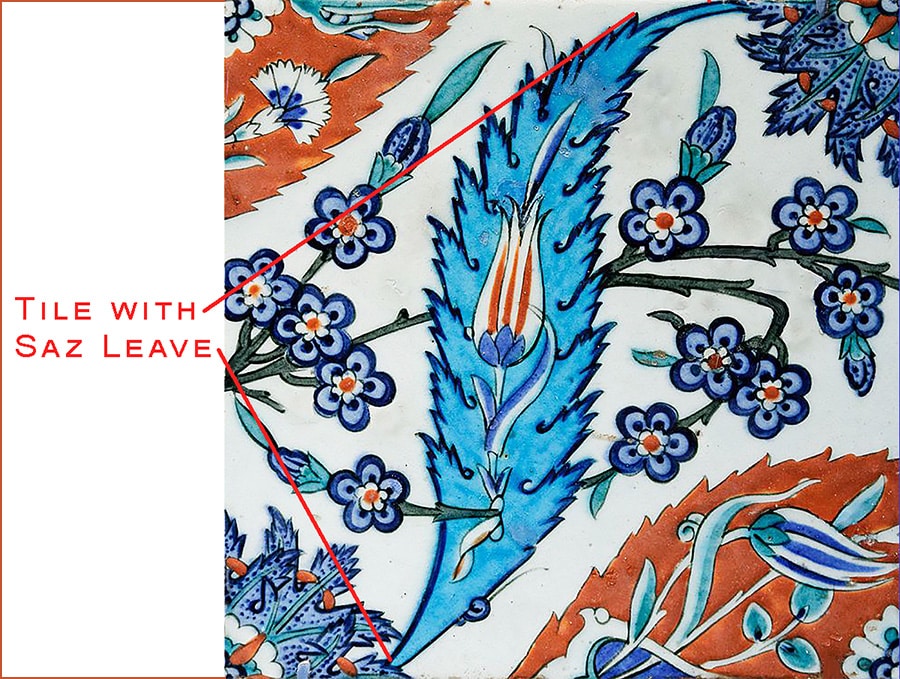
16th Century Tile With Saz Leaves Design
This exquisite Ottoman court prayer carpet features designs in both the floral and saz styles. There are carnations, tulips, and other flowers on the border, and the jagged saz leaves gently undulate among them. You can tell this is a prayer rug by the arch in the middle, which stands for both a mihrab (in mosque design) and an entrance to bliss. Muslims have traditionally and currently used such rugs during the five daily prayers required by Islam.

Mihrab Design in an Islamic Muslim antique Prayer rugs
One can pray at a mosque during prayer hours, but one need not do so as long as a rug is present to provide a clean area and water is available for ritual washing. The owner of such a lavish Muslim prayer rugs would have been a member of the royal family or a member of the highest class of society.

Very Rare 18th Century Antique Ottoman Double Niche Prayer Rug 48648 (sold)
Perhaps the narrow columns of Muslim Spain inspired the pattern of this extraordinary carpet, the forerunner of subsequent designs. Many Muslims and Jews who fled Spain in 1492 ended up under the Ottoman rule, where they introduced their contemporary art. This two-column layout became the inspiration for a whole style of Anatolian prayer rugs.
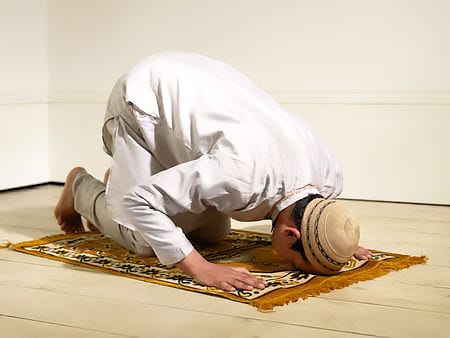
Muslim man praying on an Islamic prayer Rug
Their peculiar construction is one of the more striking features of Ottoman court rugs. The S-spun wool used in Ottoman court mats is unique to Egyptian carpets and not used in any other Turkish carpets. According to experts, this peculiarity may be traced back to the 1517 Ottoman invasion of Egypt, after which the Ottoman state began ordering mats from Egyptian shops and importing Egyptian workers and yarn for use.
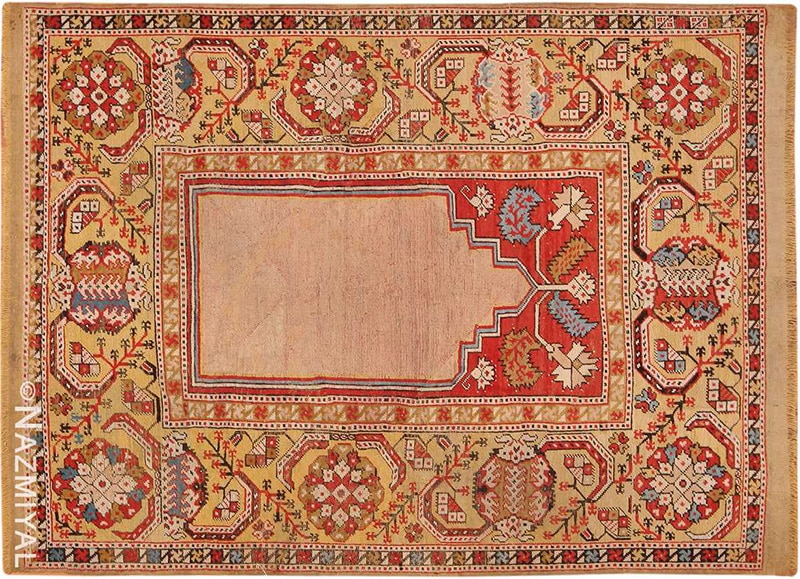
Antique 17th Century Transylvanian Prayer Design Rug #70331
Carpets were an important part of royal life, illustrated in contemporary manuscripts. Even while paintings aren’t pictures, and the painters may have made up many details in the situations they depict, this kind of artwork can provide insight into the standing of carpets in the courtroom.

Monarch Murad III Presentation Of Safavid Official To Ottoman Sultan Miniature
Monarch Murad III commissioned the above artwork. It depicts the presentation of a Safavid official to the Ottoman sultan against the background of a gorgeous red and blue Oushak medallion carpet. The painting depicts the symbolic significance of mats in Ottoman court ceremonies. The carpet serves as a luxurious backdrop for the ceremony and a statement to the Safavids (Ottoman ideological adversaries) about the richness of the Ottoman court. We can only speculate on how such a mat was used to showcase the Ottoman Empire’s might and artistic / cultural prowess to foreign guests.
Learn more about the antique Ottoman textiles and rugs
The Safavid court carpets
During their reign from the early 16th to the early 18th century (1501–1736), the Safavid dynasty over Greater Iran was known for supporting the arts. The carpets commissioned by the Safavid court palace were known for their exquisite craftsmanship, luxurious materials, and intricate designs.
The carpets that were intended to be used in a more “Islamic” centric type setting will have non-figurative ornamentations. You can expect to see naturalistic rug patterns like scrolling flower patterns, calligraphy, intricate medallion “Shamsa” designs and vines. These patterns are all commonplace in the religious weavings and rugs like the Ardabil carpet (sunbursts).

Central “Shamsa” Medallion Design Of The Ardabil Carpet
Rugs commissioned for more secular spaces, such as the court’s castles and amusement pavilions, tend to feature more diverse themes than those seen on religious rugs like the Ardabil. The designs of these antique rugs may include hunting scenes, human figures, animals and even cherubs / angels.
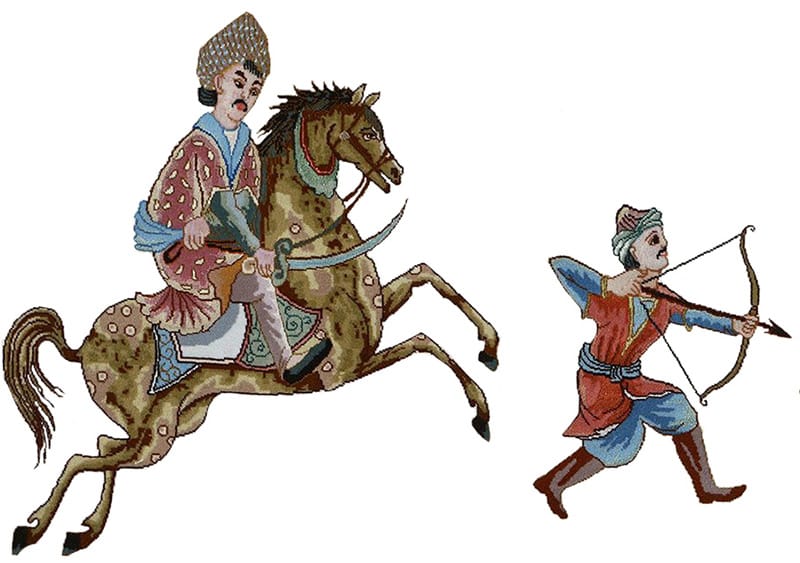
Artistic Rug Design – Hunter And Archer
The carpet below is a superb illustration of a secular approach to design in a Safavid period rug. Its brilliant landscape is covered with creatures, some of which are really like lions and rams and others of which are pure fantasy. Some creatures are depicted in violent conflict, while others are shown peaceful coexistence against a backdrop of stylized flowers and trees. Hunting was a popular topic in Safavid art because it had long been associated with the nobility in Iran before and after Islam’s arrival.
The court workshops fabricated massive rugs with repeated themes. Manuscript images from the Safavid era shed light on how carpets were used in the court, much like Ottoman paintings. Many times we see a king relaxing on a modest yet sumptuous carpet in an outdoor amusement. Much like the scene in the below 16th century manuscript titled “Laila and Majnun in School”.

16th Century Safavid Manuscript of “Laila and Majnun in School”
These outdoor celebrations, as well as those held inside the castles of the Safavid shahs, would use the royal family’s collection of royal crafted rugs.
Learn more about the antique Safavid rugs
The Mughal court carpets
From 1526 to 1858, the Mughals ruled much of the Indian subcontinent, oppressing a predominantly Hindu population with practices alien to their own.
Before the Muslim conquest, likely, India didn’t have a real Oriental rug history. The Mughals, descended from the Mongol empires that ruled Iran and Central Asia, quickly set up weaving enterprises in their royal palaces.

17th century Mughal miniature painting – Timur surrounded by his Mughal heirs while sitting on a rug
Because of the high demand for Persian artisans by the early Mughals, the carpets from that era often have intricate patterns inspired by Persian rugs and art. At some point, a distinctly Mughal visual lexicon manifested itself in the miniature painting, court carpets and other arts.
The Mughal dynasty court rugs and art are quiet varied in their stylistic approach. While we do see many depictions of naturalistic and realistic scenes such as hunting and historical records, we also see more abstract floral designs as well. But throughout the examples from Mughal court, we see many depictions of rulers holding court while sitting atop some of the most beautifully crafted area rugs.
On the other hand, many Mughal carpets include elaborate floral designs and lattice patterns throughout. You may find botanically realistic floral designs on various Mughal court media, with their popularity culminating during the reign of Shah Jahan, whose patronage of the Taj Mahal mausoleum is famous for its incorporation of comparable floral designs into its architectural adornment.
Learn more about the antique Mughal rugs
Love the history of court rugs? Now you can own a true piece of history with these Safavid, Ottoman and Mughal rugs
This rug blog about the history of the iconic Ottoman, Safavid and Mughal Court carpets, was published by Nazmiyal Rugs in NYC.


